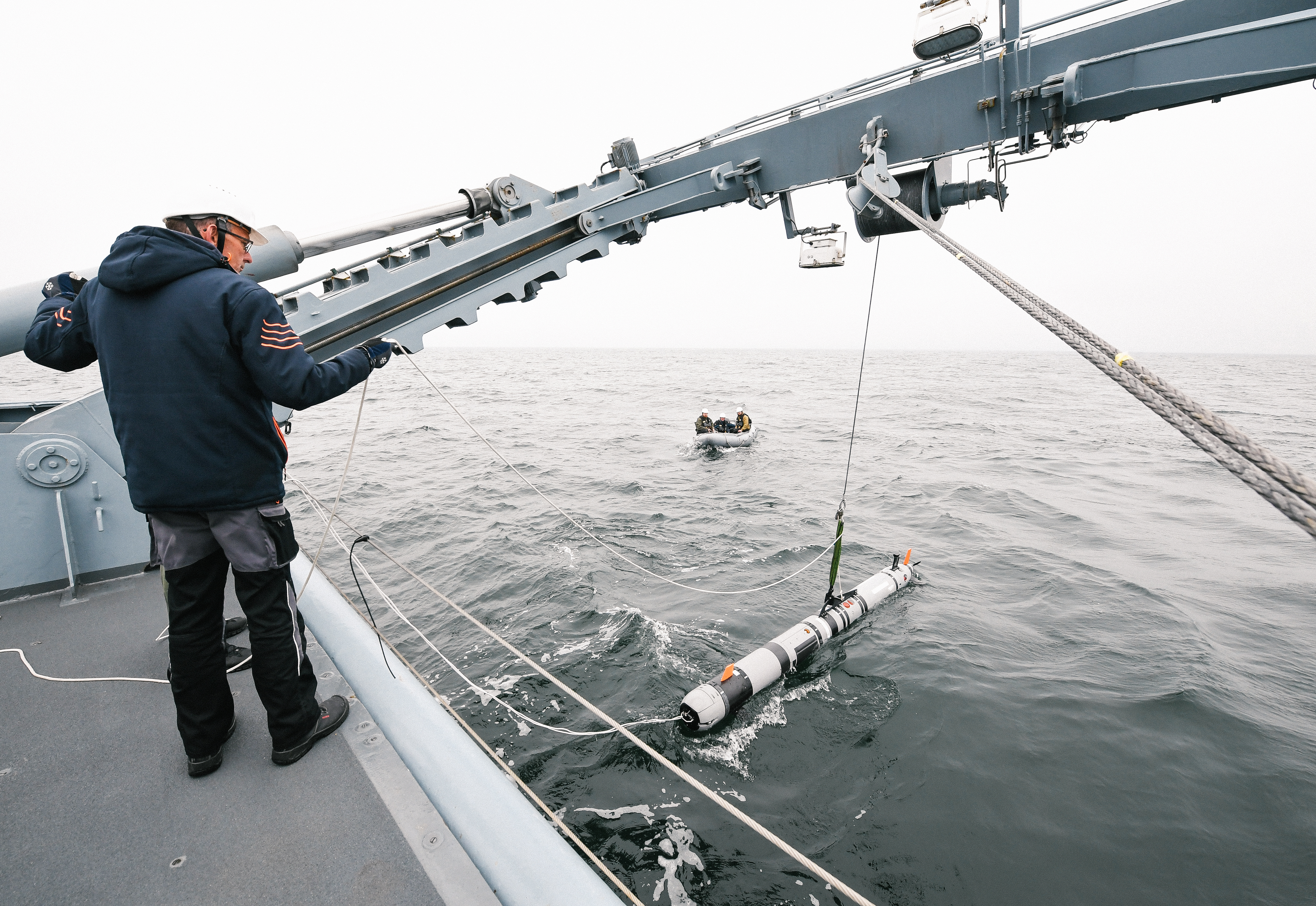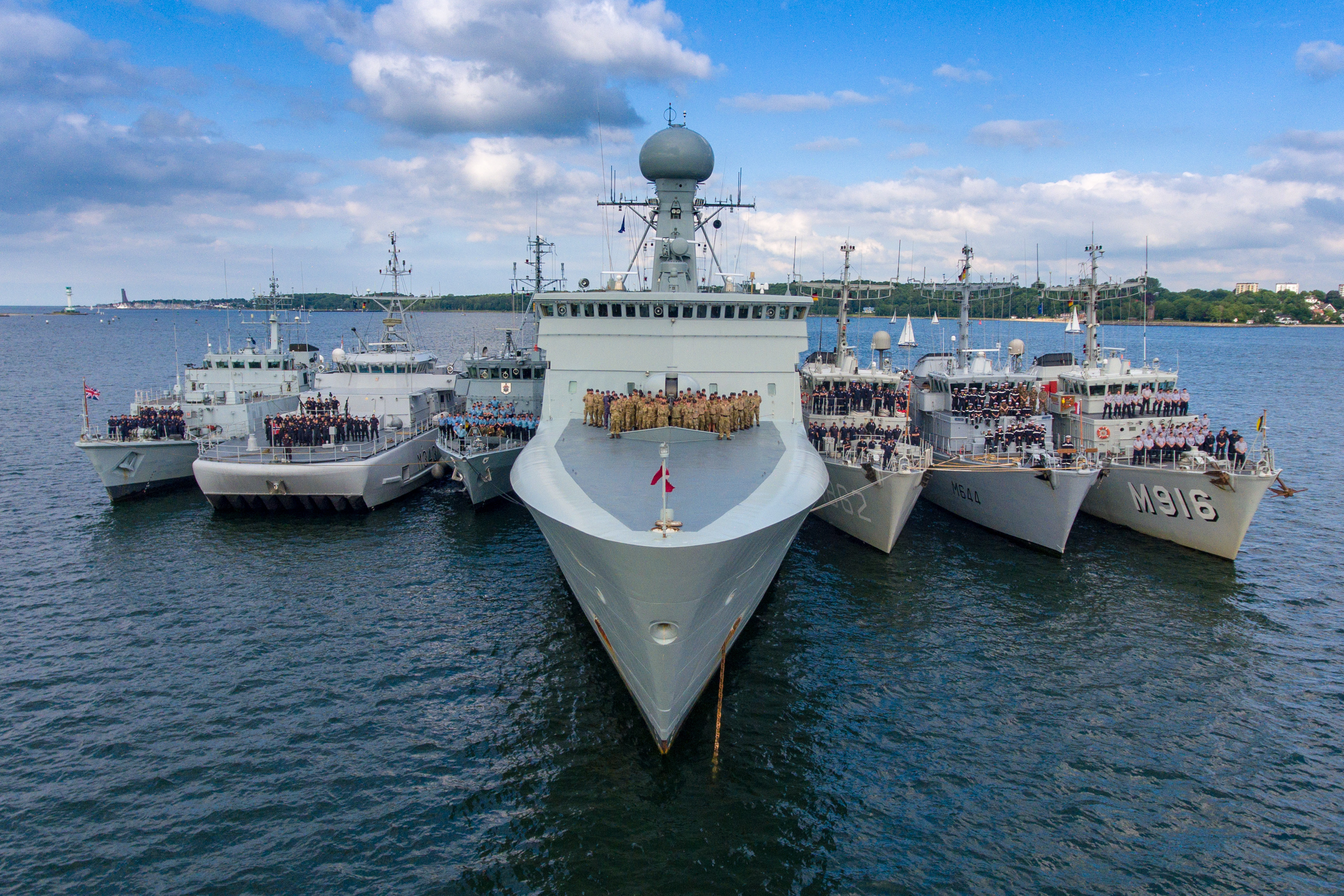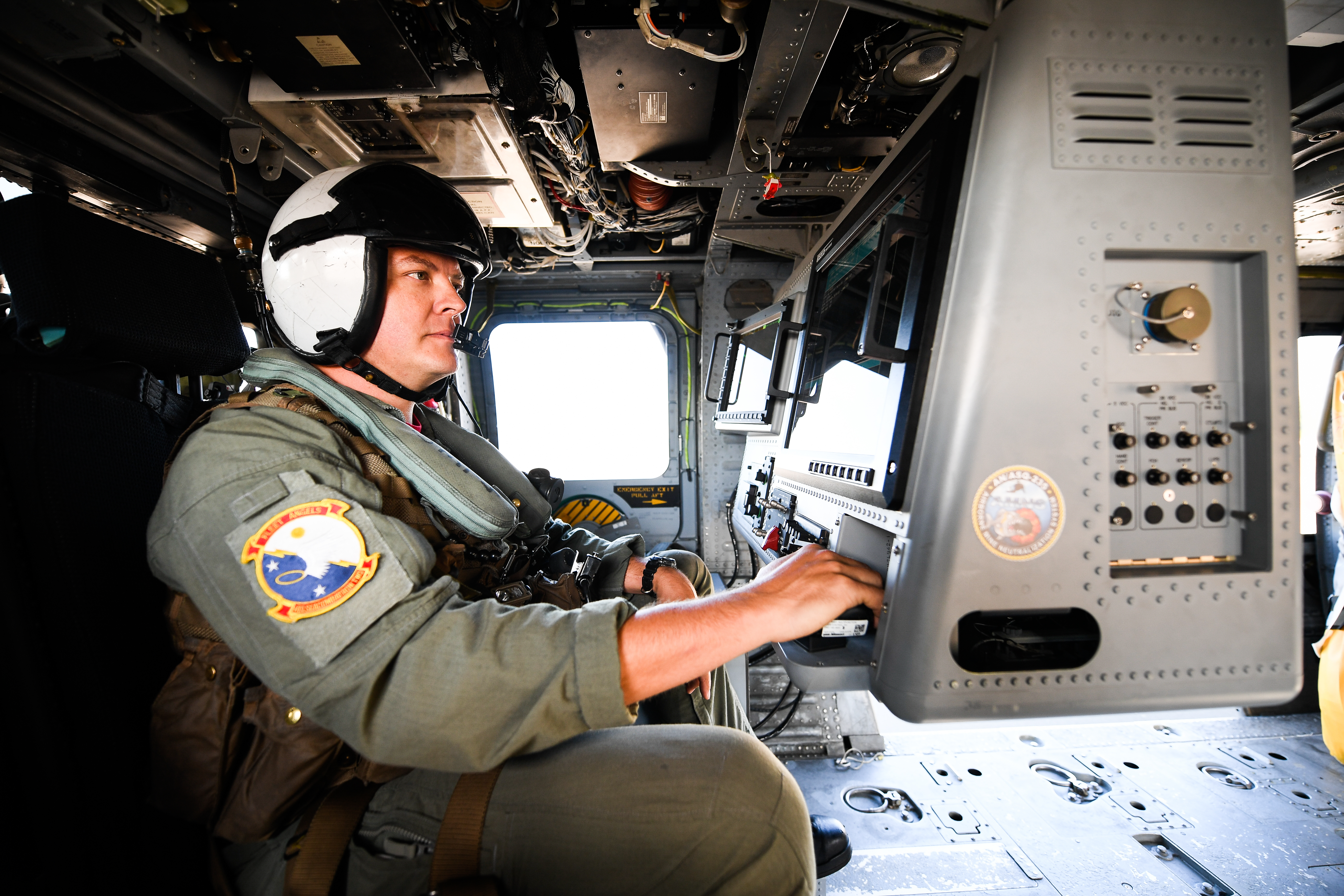
ABOARD USS MOUNT WHITNEY, IN THE BALTIC SEA – As the U.S. Navy undergoes a major transition in how it conducts mine warfare, it had the chance to test out its newest tools during BALTOPS 2019 alongside European partners who are mine warfare experts.
The excitement over new mine countermeasures (MCM) and offensive mining tools, as well as the expertise gained during this international exercise, comes as the U.S. Navy’s mine warfare (MIW) leaders are trying to further professionalize the community through the creation of MIW subject matter experts at the Naval Surface and Mine Warfighting Development Center (SMWDC) and the incorporation of realistic MIW events in training exercises at home, SMWDC commanding officer Rear Adm. Scott Robertson told USNI News during the BALTOPS exercise.
“Mine warfare is incredibly important. Historically, mine warfare directly determines whether you’re able to achieve sea control – and the absence of having the ability to deal with that can have significant impacts on our overall objectives,” he said during an interview aboard command ship USS Mount Whitney (LCC-20).
Noting the transition from manned helicopters and ships to unmanned systems operating off a Littoral Combat Ship, Robertson said, “what better playground to be able to demonstrate that in than here during BALTOPS, where we are working with the allies and partners we will anticipate actually working with in a real-world event, in a very realistic environment, and having shapes in the water, in some challenging waters? There’s no better proving ground than here.”
Robertson led the mine warfare task group in BALTOPS 2019, which was the largest task group in the exercise and included two existing task units – the Baltic Naval Squadron (BALTRON) and Standing NATO MCM Group 1 – as well as a third unit formed for the exercise. In total, Robertson led a force of more than 15 MCM ships, 15 unmanned underwater vehicles (UUVs), five drone ships and more than 70 divers, the Navy stated. Eleven countries contributed to this force, including many that have deep expertise in hunting and neutralizing mines due to the large number of World War II-era mines still in the Baltic Sea and other European waters.

Mine Warfare In BALTOPS 2019
Among the notable achievements for Robertson and his SMWDC team at BALTOPS were using the Airborne Laser Mine Detection System (ALMDS) and Airborne Mine Neutralization System – Archerfish (AMNS-AF) systems from the LCS MCM mission package for the first time in an operational theater. The Navy recently tested these systems aboard British auxiliary ship RFA Mounts Bay (L3008) in Virginia, though the event with the U.S. and Royal U.K. navies simply tested the ability for a vessel of opportunity to launch and recover and command and control the systems – the airborne systems never actually looked for mines in the water during that event in March.
Helicopter Sea Combat Squadron (HSC) 28, which will generate the first airborne MCM detachments to operate on LCSs beginning next year, exercised airborne MCM capabilities during BALTOPS for the first time in more than a decade, according to the Navy. Three World War II-era mines were cleared, increasing the safety to mariners operating in German waters.
And a significant amount of experimentation with new tools took place in Todendorf, Germany – separate from the hub of mine detection and clearance activities out of Ravlunda, Sweden, so the operational activities and experiments wouldn’t slow each other down – as part of a push to highlight technological advances in MCM, offensive mining, explosive ordnance disposal (EOD) and other related communities.
Robertson said the importance of practicing mine countermeasures operations and better understanding how to leverage new technology ultimately comes down to time. How much time does it take to clear a beach zone and make way for an amphibious landing? How much time does it take to search a strait and ensure it’s safe for ships to pass through?
“As we start to build confidence with our undersea sensing capability, we can figure out what the time changes are on how fast we can clear a particular area. So that’s all going to go factoring into how far in advance do the MCM forces have to arrive now so we can clear the area to be able to support amphibious objectives,” Robertson said.
Dan McPartland, representing the U.S. 6th Fleet experimentation effort in the exercise, explained during a briefing in Todendorf some of the new systems being tested out during BALTOPS 2019. The Mk 18 Mods I and II, the Swordfish and Kingfish unmanned underwater vehicles used by expeditionary MCM companies in the Navy, were operated in U.S. 6th Fleet for the first time, he said, with the Kingfish being operated off a German multipurpose support ship. The Kingfish also tested out a new Autonomous Topographic Large Area Survey Forward Looking Sonar (ATLAS FLS) sensor package to support intelligence preparation of the operational environment (IPOE) ahead of mine countermeasures and amphibious operations, as well as a new Small Synthetic Aperture Minehunter (SSAM II) package for high area coverage mine hunting.
With the data from the ATLAS sonar and more, McPartland explained, the Navy can now generate a map that shows what lanes from the sea to the beach contain what challenges – troughs, mud, or other features that may diminish their confidence that the lane has been totally cleared of any mine threats. Whereas previous MCM operations involved the amphibious task force commander stating where the landing would occur and the MCM teams going to clear the beach, this tool allows the MCM teams to identify easy-to-clear areas, giving the amphibious leaders options for the quickest and surest mine clearance operations.
Robertson, who attended the briefing with exercise leadership and with USNI News, said, “I’ll be honest, when we were originally seeing those results, our eyes were getting all big” imagining how this tool would change the way they do business.
“Now I as a task group commander can have those conversations and make recommendations to my peers that are responsible for the amphibious ships and the Marines and start the dialogue with, hey, I know you want to do a landing here, but based on our first sweep below, if we focus and do a landing down here (in a different area), I can have that cleared to this amount of confidence in this amount of time.”
He said the new tool would allow that conversation to happen much earlier and with more data backing up the final decision.

Integration of MIW into the Fleet
To date, technological advances in the LCS MCM mission package have been kept largely separate from the rest of the U.S. Navy fleet. They’ve undergone individual at-sea tests to achieve programmatic milestones, but when it comes to live Navy exercises, MCM is typically a box that gets checked in name only and is not conducted by live MCM forces in real time.
Robertson said he hopes won’t be the case going forward. With all the excitement over MCM in BALTOPS, he said he hopes that will translate to excitement back at home. Amphibious exercises such as Bold Alligator and Dawn Blitz, as well as pre-deployment training activities like a composite training unit exercise (COMPTUEX), could include live mine warfare activities in the near future, he said.
The benefit of conducting these mine countermeasures activities live isn’t just to provide MCM teams more practice. Rather, it would help the rest of the fleet better understand what the capabilities and limitations of the MCM technology is, how weather and adversary actions can slow down MCM work, and what that means for their larger amphibious or surface warfare plans. Robertson said the MCM community needs to go from the periphery to being fully integrated into fleet operations.
“To really get to integration is now considering the impact across all the different other warfare areas, to already be anticipating what kind of direction they’re going to get from me,” Robertson said of his goal. “Instead of waiting to be told what to do, they’re executing mission command.”
He said Vice Chief of Naval Operations Adm. Bill Moran, who will take over as chief of naval operations in August, has been pushing hard for improvements in the MCM community, and Robertson said he expected to see “a different level of focus in rejuvenating some of our lost capacity” under Moran’s leadership.
As the MIW community stands up its own warfare tactics instructors program – the Navy’s subject matter experts who will teach the fleet the latest and greatest in mine warfare – Robertson said the U.S. Navy is well equipped to teach the WTIs about mine warfare from an academic perspective, but international exercises like BALTOPS are invaluable in gaining real-world experience and knowledge from partners.
“The exercises over here with our partners are at a scale we can’t replicate” back at home, Robertson said.
“So when you’re talking about a warfare tactics instructor, we’re going to give them the education piece. What’s missing, though, is the actual real-world experience. You have to have both to really produce competence. And so being able to participate with our allies and partners who are phenomenal and very professional, that’s going to be the missing piece or the missing link that’s going to be fulfilled here, especially for our own WTI generation.”





